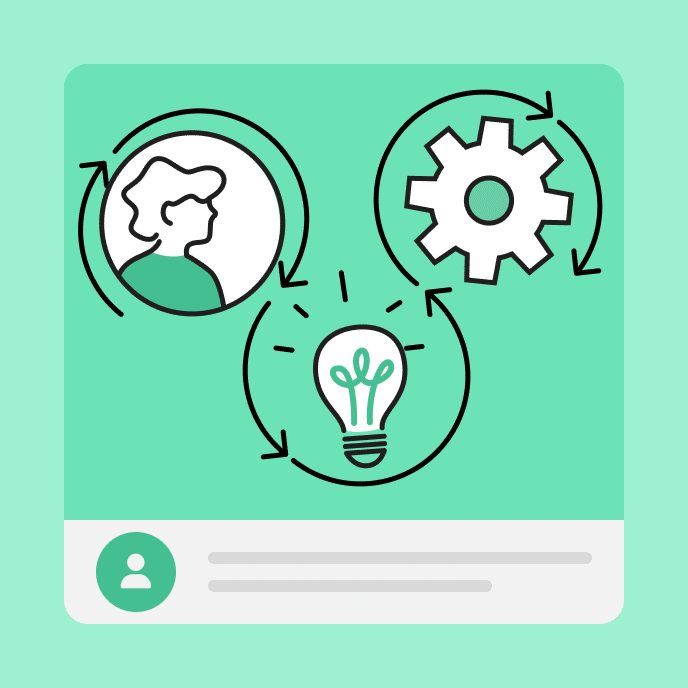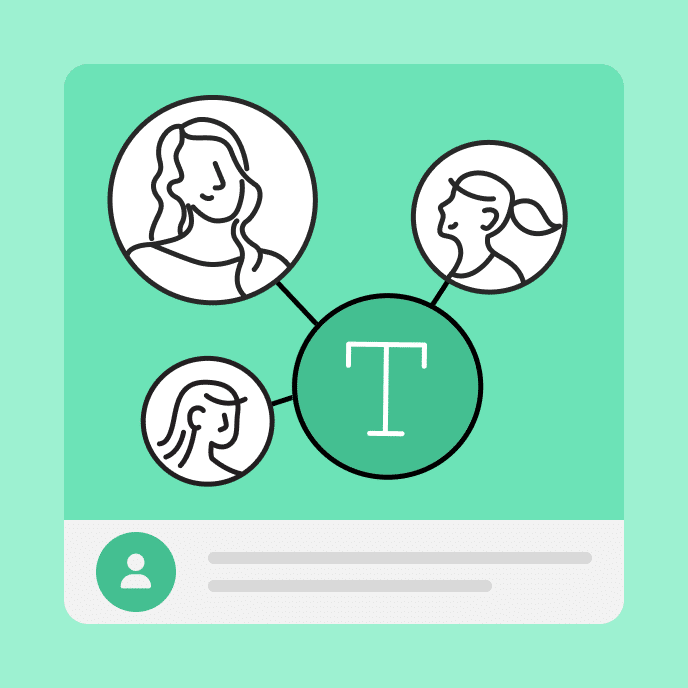AI and DEI: Tools and Operational Frameworks for Equitable Action
Check out the benefits, challenges, and practical tools driving AI-powered DEI initiatives, and the operational frameworks to turn promises into action.

A new challenge for AI: Advance DEI initiatives
AI has the potential to significantly impact corporate Diversity, Equity, and Inclusion (DEI) programs, which aim to create a workplace where people of all backgrounds feel welcome. If used responsibly, AI offers powerful tools that could advance DEI initiatives through operational frameworks that focus on ensuring representation and fair treatment for all employees.
While some fear that the risks and challenges involved are too great, a thoughtful approach to AI integration brings with it undeniable benefits. The rising adoption of AI throughout the workplace in 2025 has proven it’s up to the task—78 percent of global companies and nearly every Fortune 500 company has adopted it. It streamlines workflow, automates menial tasks, and chats with disgruntled customers.
But, a new challenge arises: corporations aim to enlist the help of AI with crucial human oversight to advance DEI initiatives through an ethical, diverse, and personalized framework.
In this post, discover the benefits and risks to running AI-driven DEI programs, and explore operational frameworks, practical tools, and leadership decisions that will make it work.
Key Takeaways
- Despite potential risks and unintended harms, AI-powered DEI initiatives promise undeniable benefits with a thoughtful, intentional, human-centered approach.
- AI tools can mitigate bias in recruitment, personalize learning experiences, and measure DEI benchmarks to help corporate hiring and training teams present opportunities to underrepresented groups.
- An effective operational framework for a successful AI-driven DEI program must have human oversight and governance, inclusive design, and diverse development teams.
- Practical tools like AI hiring bots, chatbots, and dashboard systems help bridge the gap between promises and equitable action.
Benefits of AI for DEI
AI tools have many benefits in the modern corporate workplace. They streamline daily workflows, automate menial tasks, and chat with customers online to solve their problems. Game-changing, but trivial in comparison to what AI could achieve in creating a better workplace for everyone.
AI’s potential to boost DEI initiatives presents organizations with the following opportunities:
Mitigating bias in recruitment
Bias in recruitment—whether it’s geared toward race, gender, or age—remains persistent. AI tools can help by implementing the following strategies:
- Blind recruitment. AI tools can anonymize applications, screening resumes for skills and merit rather than age, gender, name, or ethnicity.
- Targeted advertising. AI-driven advertising platforms can target diverse candidates, ensuring that opportunities are presented to underrepresented groups as often as well-represented groups.
- Predictive analytics. AI tools can enhance recruitment efforts by identifying diversity gaps in the workplace, making it easier for organizations to take meaningful steps toward inclusion.
Personalizing learning and support
When diverse candidates do manage to bypass prevalent biases in the hiring process, workplace training is the next hurdle they often encounter. AI-assisted training through a DEI lens can help. Benefits include:
- Personalized learning experiences. Adapting to the unique needs and preferences of all employees is a goal any learning and development department strives for. AI tools enhance personalized learning pathways by analyzing learner tendencies, strengths, and weaknesses, and adjusting content accordingly.
- Bias detection training. Training targeted at detecting bias can be eye-opening for those who take it, educating employees how to spot bias and counter it, creating a more aware and adaptable workforce.
Measuring DEI progress in real-time
For many businesses, it’s important to not just start addressing conscious biases, but ones that aren’t as easily detectable. AI analytics tools can help with:
- Bias detection. AI tools can analyze vast amounts of data, revealing patterns of bias in hiring and other organizational processes and policies. Once identified, companies can perform targeted interventions to mitigate biases.
- Progress tracking. AI dashboards can track progress by demographic, analyzing performance and engagement metrics to help L&D departments make informed decisions about how to enhance training initiatives for underrepresented groups.
Risks and unintended harms
The benefits listed above only work if implemented thoughtfully and fairly. Risks and unintended harms associated with AI-powered DEI initiatives are as follows:
Algorithmic bias and fairness
AI tools are only as good as the sources that feed them. AI recruitment tools—if trained on historical data—run the risk of reinforcing existing biases, including privileging one group over another and associating certain demographics with specific roles or behaviors.
Crucial to avoiding these pitfalls, organizations need to ensure that the data used to train the AI tools they’re using are as fair as possible, without historical biases hindering DEI efforts.
The digital divide
Access to AI is widespread, but AI tools range in abilities. A growing number of job candidates use AI to enhance their resumes, propelling their name to the top of the list. But those who don’t have access to powerful AI tools can get left behind.
This opportunity gap—between those who can access powerful technologies and those who cannot—only exacerbates the original problem. At a minimum, basic AI tools require a device—often too expensive for the underrepresented—and the very best require processing power that few can afford.
Privacy, consent, and surveillance
As with most technology, data security is a concern with AI-powered DEI programs. Integrating AI into HR processes, for example, puts candidate and employee personally identifiable information at risk, exposing them to possible data breaches.
Organizations must find a way to balance data analytics with ethical use. Putting access controls in place to keep employee data safe and choosing AI vendors who don’t collect and sell personal information is a good starting point.
Frameworks to operationalize AI-driven DEI
Providing an operational framework is necessary to bridge the gap between the growing presence of artificial intelligence (AI) in corporate hiring and training processes and the need for accurate social diversity in those systems.
Developing an AI policy is a must for organizations who seek to achieve the ethical mission of their DEI initiatives, ensuring any guidelines created make their way to practical application. To do so, organizations should implement:
Inclusive design and persona modeling
Inclusive design is the effort to make all products, services, and environments—both physical and digital—available and usable for everyone, regardless of background and abilities. Course creation tools with built-in AI tools make inclusive design easier and faster, empowering a diverse base of users that regularly bring fresh perspectives.
AI-created persona-based simulations have potential to enhance DEI initiatives through workplace training experiences that foster empathy and reduce bias. Employees in training can interact with AI-generated avatars that represent people with diverse backgrounds, exposing them to perspectives different from their own. This gives them the opportunity to practice navigating realistic workplace scenarios in a safe, virtual environment, enhancing their cultural competence.
 Human oversight and governance
Human oversight and governance
To ensure AI systems are developed and used responsibly, human oversight and governance is necessary. This might include:
- An AI risk committee with diverse representation to identify, manage, and mitigate potential risks like algorithmic bias and privacy concerns.
- An AI ethics committee to ensure AI systems development aligns with legal requirements and ethical guidelines.
- Routine algorithm audits to identify any new concerns.
- Stakeholder education efforts to promote awareness of responsible AI practices.
Diverse development teams
Again, AI tools are only as good as the sources that feed them. More accurately, AI tools reflect the biases of the sources that feed them. Organizations with AI development teams that are diverse in gender, race, age, and ability create AI with better code quality and reduced bias.
By capturing a wide range of perspectives in the design and implementation stage, everyday users of AI tools will see and feel fewer barriers, promoting equitable access for all.
Practical application and tools
Let’s now take a look at tools to help organizations bridge the gap between theoretical AI guidelines and practical application.
Fair recruitment and hiring bots
When paired with human oversight and regular bias audits, the following three AI tools can enhance fair recruitment initiatives.
- Textio can be used to remove biased language from job postings, and helps you replace it with inclusive language.
- Rival Recruit can be used to reach a wider audience, enabling recruiters to reduce bias and target underrepresented groups when searching for candidates.
- Paradox’s Olivia is an AI hiring assistant that automates candidate matching, applicant screening, interview scheduling, video interviews, and even contract offer letters, all with an ethical approach accessible for everyone.
These tools make it easier to find and hire top candidates while honoring DEI initiatives.
Chatbots for inclusive workplace culture
Chatbots, like those many of us encounter when opening a retail or car dealership website, can be of great help to enhancing diversity programs as well.
- DEIAlly is an AI assistant trained to help HR professionals develop inclusive training and uncover biased practices. Its private chat feature helps embed DEI across hiring, training, company policy, and employee engagement.
- Reframe AI chatbot, built by Reframe technologies, focuses on correcting historical and economic inequities, and provides instant feedback to help organizations identify DEI barriers and come up with solutions.
- Humanify DEI+BOT is a simulation-based interactive video coach that guides users through difficult workplace situations like race and gender microaggressions and provides feedback on empathy and listening skills.
Monitoring systems and dashboards
AI-powered dashboards monitor DEI initiatives, both measuring and enhancing metrics like representation and engagement. Here are two that stand out:
- Diversio is a DEI analytics platform that provides inclusion scores that cover career development opportunities, fair management practices, recruiting and hiring practices, and more. Benchmark scores are provided—as well as recommended goals—for organizations to reach and maintain.
- Included.ai is described as a “people analytics” platform that focuses on the hiring and engagement process that provides proactive warnings when DEI metrics are in danger of missing the mark.
Providing organizations with real-time measurements of DEI metrics allows quick and relevant changes to hiring and training practices to meet inclusivity goals consistently.
Leadership and culture change
When only one department buys into culture change, DEI initiatives are bound to fail. Organizational diversity goals must be implemented across the company to be successful. Here are three ways to make it happen.
Executive buy-in and accountability
DEI leadership needs to be visible from top to bottom for organizations taking it seriously. Even though 90 percent of CEOs have a built-in DEI component to their organizational goals, many are seen as simply performative. To build trust in leadership and the organization, executive buy-in and follow-through is a must.
C-suite executives should meet with DEI leadership to make real plans to drive real outcomes. This means a well-drafted DEI strategy with a thorough implementation plan, with regular audits and feedback loops included.
Employee education and transparency
Building awareness of bias and AI use for all employees is critical to creating an inclusive workplace culture. Practical AI-powered tools—like those listed in the previous section—can be used to give employees personalized learning in support of DEI initiatives.
With AI use in general, transparency is important. Any AI-driven content should be disclosed to users, and committees should be formed to implement accountability structures.
Cross-functional, continuous audits
AI decisions should be regularly monitored for any unfair biases. To include all key stakeholders, this should be a cross-department effort. HR, IT, DEI, and legal teams should all meet regularly to align AI-powered DEI initiatives with compliance requirements and company values. Executive leadership should also be involved, collaborating with DEI leaders to drive real change.
Final takeaways
AI holds transformative potential for DEI when intentionally designed, governed, and applied—enabling bias mitigation, inclusion, and equity. But without proper oversight, diverse teams, and transparent practices, AI risks reinforcing systemic inequities. The key lies in responsible adoption: inclusive development, human accountability, ongoing measurement, and cultural commitment.
Interested in learning more about the intersectionality of AI and DEI? Check out Can AI Understand Culture? for answers to fundamental questions about human-centered AI use, and its implications for the future of cultural diversity in the workplace. Ready to start creating inclusive, AI-powered courses for your employees? Start your free trial of Articulate 360 today.
You may also like

The ADDIE Model: 5 Steps to Effective Workplace Training
Explore the five phases of the ADDIE Model, and learn how to apply them for an adaptable, iterative approach to creating relevant workplace training.

